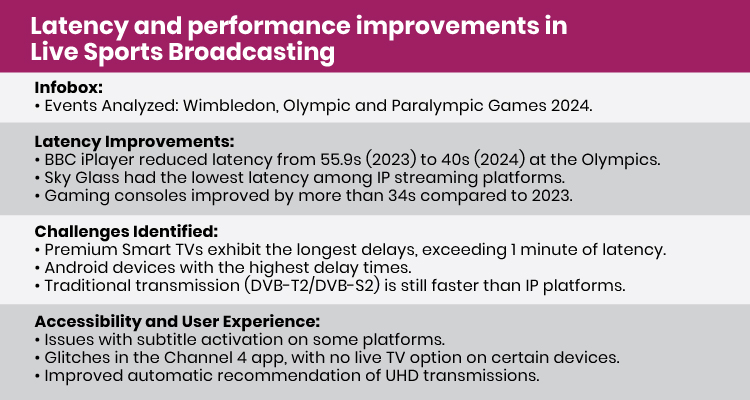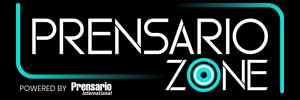
Digital TV Group (DTG) has presented an analysis of latency in live sports broadcasting in the UK, conducted during three key 2024 events: Wimbledon, the Olympic Games and the Paralympic Games. The study compared the performance, latency and accessibility of devices compared to the 2023 events, providing insight into the current state of sports content streaming over IP. While progress can be seen, challenges remain for some devices, particularly well-known brands that continue to experience significant delays.
The analysis highlights progress in reducing latency in live sports broadcasting, bringing the experience closer to the level of traditional broadcasts. However, challenges remain in achieving consistent performance across devices. As demand for real-time access to live events grows, the industry must continue to focus on reducing latency and improving accessibility to provide a smoother and more satisfying experience for all users.
Improvements in latency and device performance: One of the most relevant findings is the improvement in latency. BBC iPlayer achieved a significant reduction in latency from 55.9 seconds for the 2023 Coronation coverage to 40 seconds for the 2024 Olympics, an improvement of 15.9 seconds. Sky Glass, meanwhile, had the lowest latency among IP broadcast platforms, leading in all three events. However, some premium brand smart TVs showed the longest delays, with some devices exceeding one minute of latency, highlighting the need for improved consistency in device performance.
Challenges on Android devices and consoles: Android devices showed the highest latencies, with delays reaching up to one minute in some cases. In contrast, gaming consoles showed the greatest improvement, with a reduction of more than 34 seconds compared to 2023. This reflects progress on specialised platforms, although the disparity in performance between devices still remains significant.
Traditional transmission performance vs. IP: The report also showed that traditional transmission methods, such as DVB-T2 and DVB-S2, had the lowest delays, consistently outperforming IP transmission services. This difference highlights the current limitations of IP broadcasting in terms of latency.
Broadcast accessibility and functionality: In terms of accessibility, inconsistencies were found. While captioning was generally accurate on streaming platforms, some devices experienced problems enabling captioning during live broadcasts. In addition, the Channel 4 app showed notable flaws on the devices tested, with some having no options for live TV, highlighting the need for improved consistency in accessibility features.
User experience improvements: User experience improvements were identified, such as the implementation of proactive prompts to switch to higher quality UHD transmissions, which improves satisfaction and engagement. However, the report notes that further improvements still need to be made to applications to ensure consistent accessibility features across all devices.
Power consumption and the future of IP broadcasting: Preliminary tests on power consumption indicated differences between IP broadcasting and DVB-T2 mode, suggesting that further analysis is required as the industry moves towards IP content delivery. This assessment will be crucial to improve energy efficiency in the future.







